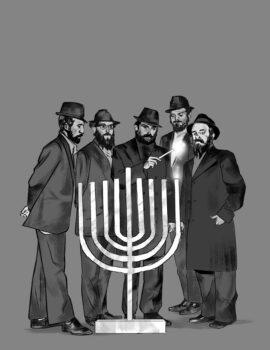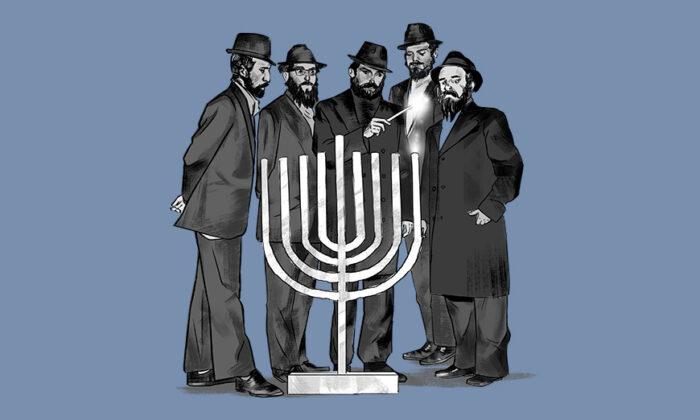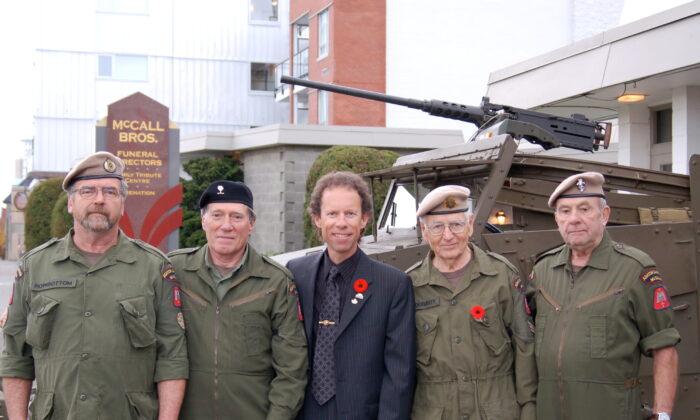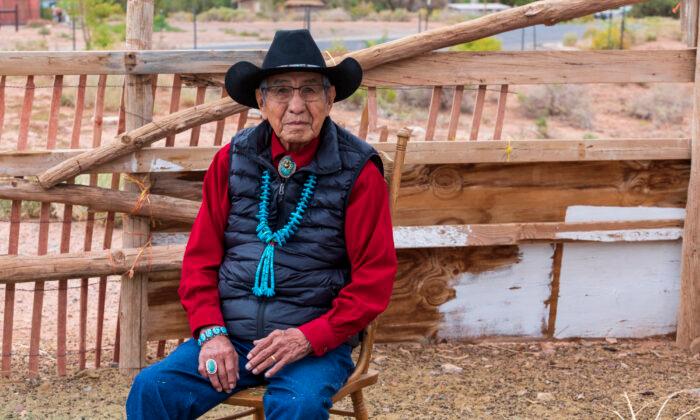Hanukkah, the “Festival of Lights,” commemorates Jewish guerrillas’ victory in the second century B.C. over a Greek ruler who suppressed Jewish religious practices in Israel. In the United States, 68 percent of Jews consider Hanukkah to be one of the three most important Jewish holidays, compared to 38 percent of Jews in Israel, according to a 2018 survey.
“For the first time in perhaps thousands of years, we live in a place and in an era where we’re able to celebrate freely who we are,” said Rabbi Motti Seligson from the Chabad community of Hasidic Jews. “That’s what this country represents.”
Author Dennis Prager elaborates. “Jews have been equals and honored as such from even before the creation of the United States,” Prager wrote. “Many of the founders studied Hebrew; Thomas Jefferson wanted the Seal of the United States to depict the Jews’ exodus from Egypt; Yale University’s insignia is in Hebrew; a verse from the Torah (Leviticus) is inscribed on the Liberty Bell; a rabbi attended George Washington’s inauguration—the list of pro-Jewish expressions in U.S. history is endless.”
Washington himself expressed that spirit at the end of a letter to a Jewish congregation in Newport, R.I. in 1790:
“May the Children of the Stock of Abraham, who dwell in this land, continue to merit and enjoy the good will of the other Inhabitants; while everyone shall sit in safety under his own vine and fig tree, and there shall be none to make him afraid. May the father of all mercies scatter light and not darkness in our paths, and make us all in our several vocations useful here, and in his own due time and way everlastingly happy.”
Hanukkah’s Roots
The story of Hanukkah starts in 168 B.C. in Judea, which encompasses central Israel and the West Bank. At the time, Judea belonged to the Seleucid Empire, one of three that arose after Alexander the Great’s generals partitioned his continental conquests after his death. Emperor Antiochus IV—who nicknamed himself “Epiphanes,” Greek for “divine manifestation”—began imposing Hellenistic culture and repressing Judaism. Antiochus even plundered and desecrated Jerusalem’s Temple, the focal point for worship.
But a rural priest, Mattathias, began the revolt. Mattathias killed a Jew who had acted for the priest in offering a sacrifice to a Greek deity, then fled with his five sons to nearby hills. When Mattathias died in 166 B.C., his son Judah emerged and formed an army that used guerilla tactics against Hellenized Jews and Seleucid forces. Judah and his soldiers earned the nickname “Maccabees,” Hebrew for “hammers.”
In 164 B.C., Judah and his army captured Jerusalem and began to rededicate the Temple. Rededication involved relighting the menorah, a multi-columned candelabra that had to be illuminated continuously. Yet only enough oil existed to keep it lit for one day. However, that small amount of oil lasted eight days, until the Maccabees made more. Hanukkah honors Judah’s victory and its ultimate sign, which Jews consider miraculous.
Celebrating Despite Persecution
For centuries, Jews celebrated Hanukkah privately and surreptitiously. Instead of placing lit menorahs outside their homes for public display, the recommended practice, persecuted Jews kept them inside their homes or synagogues. When millions of European Jews came to the United States during the late 19th and early 20th centuries, they found a completely different challenge in commemorating Hanukkah.
Though Jewish immigrants faced none of the state-sponsored persecution they escaped, they confronted the problem of maintaining their identity amid the pressure to assimilate. Hanukkah’s proximity to Christmas proved challenging, especially with Christmas becoming more secularized and commercialized. As early as 1890, Rabbi Kaufman Kohler posed the following questions in The Menorah:
“How can the Jew, without losing self-respect, partake in the joy and festive mirth of Christmas? Can he without self-surrender, without entailing insult and disgrace upon his faith and race, plant the Christmas tree in his household?”
A Remedy
In the 1970s, a renowned rabbi devised a way to encourage Jews to embrace Hanukkah’s ultimate meaning.
Rabbi Menachem Mendel Schneerson, who led the Chabad community, began a campaign to erect large menorahs in public. For the previous 30 years, since emigrating to the United States in 1941, Schneerson, an Orthodox scholar, founded numerous educational and social projects in the United States and Israel. He even rescued Iranian Jews after the 1979 Islamic Revolution and Ukranian Jews following the 1986 Chernobyl disaster.
Schneerson started the campaign in 1973. One year later, it staged a public menorah lighting near Philadelphia’s Liberty Bell. Similar events soon followed. By 1979, the White House grounds featured a lit menorah. The campaign continues nearly 30 years after Schneerson’s death.
Schneerson’s idea reflects the traditional practice of placing lighted menorahs along the streets outside homes, a practice with a profound significance that Schneerson described:
“God gave each of us a soul, which is a candle that He gives us to illuminate our surroundings with His light. We must not only illuminate the inside of our homes but also the outside, and the world at large.”
After centuries of persecution, Jewish immigrants found the ability to fulfill that public calling in the United States.





